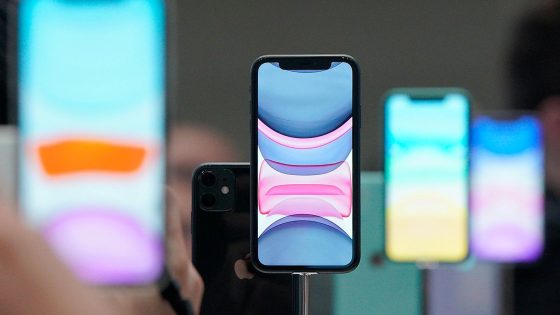Music has an almost magical way of transporting us back to the moment in our lives when we heard it: the pop song that underscored your first kiss, the one that played at your graduation and so on. In mopey, dopey YA weepie “The Greatest Hits,” writer-director Ned Benson takes that idea as literally as possible, treating specific tunes as triggers that launch Harriet (Lucy Boynton) back into her past, blowing her — like that seated guy in the classic Maxell campaign — into the tragic former relationship with hunky Max (square-jawed future Superman David Corenswet), who died in a car crash.
Sounds romantic, right? Actually, Harriet’s condition is kind of a drag, as she’d like to move on, but must now go through life wearing noise-canceling headphones and curating playlists with only “safe” songs (those with zero nostalgic potential). Music matters to Harriet, who worked in the industry — turns out Max was something of an indie rocker, while she mixed his album. Since the incident, she can no longer risk the roller coaster that hearing the wrong song might launch, so she’s taken a job at the library (it’s quiet, get it?).
It all seems like a lot of effort just to make this high-concept premise work, with certain details — like, how Harriet can hear conversations when her hearing is muffled — left maddeningly unexplained. You’d also think she’d be a bit more careful behind the wheel after surviving a deadly car accident. This is a love story; it’s not meant to be logical. Still, such a premise lives or dies by its execution, and apart from the pretty pixie flares that swarm the screen each time Harriet is about to sonic-zoom, “The Greatest Hits” feels like the remainder-bin version of better love stories.
Set in the hip(ster) Los Feliz/Silver Lake neighborhoods of Los Angeles, the movie suggests that Harriet’s preferred way of listening to music is on vinyl. Living in a house no librarian could afford, she has covered the wall with one of those serial-killer murals, featuring a timeline of her four-year relationship with Max broken down into song-specific moments. The rest of the room is centered on her turntable, where crates of “untested” LPs wait to be tried.
Because certain songs send her back to the moments when she first heard them, Harriet hopes that she can find the one missing musical cue that will allow her to change the past and save Max’s life. The guy looks like movie-star material, but makes for a rather banal boyfriend, judging by the generic-looking memories sampled (flirting at a concert, splashing together at the beach). She appears to be living in an allergy-medicine commercial, which means that audiences clue in long before Harriet does that the movie wants her to move on.
Enter David (Justin H. Min), a goofy-cute potential suitor who turns up at one of her grief support meetings. David’s parents recently died, and he’s dealing with his own feelings, but for some reason (which Boynton’s performance doesn’t convey), it seems like a good idea to hit on the girl with the headphones. While she tries to block out unwanted oldies, Benson orchestrates ways for Harriet and David to bond in relation to new music: at the record store, attending a dance party DJed by her gay best friend (Austin Crute), etc.
So much about these scenes feels forced, as if Benson is presenting a thesis on how contemporary humans relate to music. And yet, most people don’t remember the time and place of every song they’ve ever heard. When they find a favorite, that tune gets played lots of times. The selections in “The Greatest Hits” run the gamut from indie rock to instrumentals (with random choices, like “Pump Up the Jam,” inexplicably thrown in). Obviously, these songs mean something to Harriet — and maybe Benson as well — but they don’t hold any significance to us, which makes for an incoherently eclectic soundtrack.
Still, the movie’s intention is obvious: Harriet is understandably trepidatious about being in music-filled spaces, which serves as a way of showing how emotionally damaged individuals cautiously reemerge into social environments. Though we’ve waited more than a decade to see what “The Disappearance of Eleanor Rigby” director Benson would do next, everything about that big-swing debut (a love story split into “his” and “hers” perspectives, then braided back together) suggested he was capable of something far less conventional than this. It’s a cynical play from such a romantic-minded director.
Source Agencies


